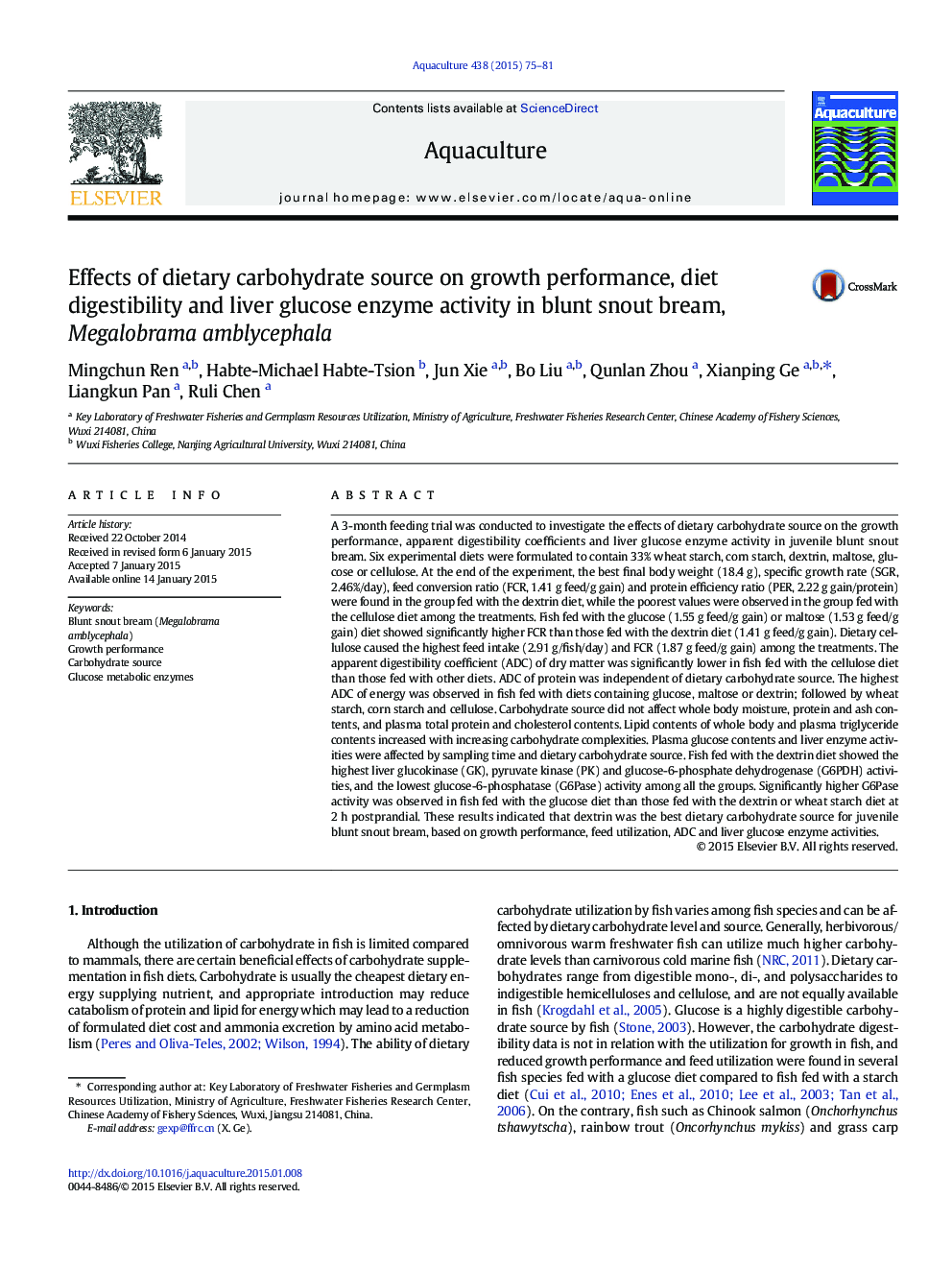| Article ID | Journal | Published Year | Pages | File Type |
|---|---|---|---|---|
| 2421648 | Aquaculture | 2015 | 7 Pages |
•Dextrin was the best carbohydrate source for juvenile blunt snout bream.•Juvenile fish fed with the polysaccharides diets showed better feed utilization than fish fed with monosaccharide diet.•Dietary cellulose induced poor feed utilization and high feed intake.•Polysaccharides improved lipid deposit compared to monosaccharide•Both sampling time and dietary carbohydrate source affected the liver glucose enzyme activity.
A 3-month feeding trial was conducted to investigate the effects of dietary carbohydrate source on the growth performance, apparent digestibility coefficients and liver glucose enzyme activity in juvenile blunt snout bream. Six experimental diets were formulated to contain 33% wheat starch, corn starch, dextrin, maltose, glucose or cellulose. At the end of the experiment, the best final body weight (18.4 g), specific growth rate (SGR, 2.46%/day), feed conversion ratio (FCR, 1.41 g feed/g gain) and protein efficiency ratio (PER, 2.22 g gain/protein) were found in the group fed with the dextrin diet, while the poorest values were observed in the group fed with the cellulose diet among the treatments. Fish fed with the glucose (1.55 g feed/g gain) or maltose (1.53 g feed/g gain) diet showed significantly higher FCR than those fed with the dextrin diet (1.41 g feed/g gain). Dietary cellulose caused the highest feed intake (2.91 g/fish/day) and FCR (1.87 g feed/g gain) among the treatments. The apparent digestibility coefficient (ADC) of dry matter was significantly lower in fish fed with the cellulose diet than those fed with other diets. ADC of protein was independent of dietary carbohydrate source. The highest ADC of energy was observed in fish fed with diets containing glucose, maltose or dextrin; followed by wheat starch, corn starch and cellulose. Carbohydrate source did not affect whole body moisture, protein and ash contents, and plasma total protein and cholesterol contents. Lipid contents of whole body and plasma triglyceride contents increased with increasing carbohydrate complexities. Plasma glucose contents and liver enzyme activities were affected by sampling time and dietary carbohydrate source. Fish fed with the dextrin diet showed the highest liver glucokinase (GK), pyruvate kinase (PK) and glucose-6-phosphate dehydrogenase (G6PDH) activities, and the lowest glucose-6-phosphatase (G6Pase) activity among all the groups. Significantly higher G6Pase activity was observed in fish fed with the glucose diet than those fed with the dextrin or wheat starch diet at 2 h postprandial. These results indicated that dextrin was the best dietary carbohydrate source for juvenile blunt snout bream, based on growth performance, feed utilization, ADC and liver glucose enzyme activities.
